BLACK PANTHER: Real African Tribes And Customs Featured (PICTURES)

Having grossed over $400 million in 4 days – against a $200 million budget – the Black Panther movie has already become a resounding success. It has also started breaking records, as its domestic opening weekend of $201.8 million is the biggest debut for a movie by an African American director, and the fifth-highest opening weekend of all time.
The movie is a lot of things to a lot of people, but to many Africans, it is their customs and traditions come to life in the big fictional screen. We have therefore curated some tribes, traditions, customs and cultures that are featured in the fictional world of Wakanda, and the Black Panther movie.
Things you should know about the Black Panther
The movie is a lot of things to a lot of people, but to many Africans, it is their customs and traditions come to life in the big fictional screen. We have therefore curated some tribes, traditions, customs and cultures that are featured in the fictional world of Wakanda, and the Black Panther movie.
Dora Milaje – Benin Republic
The Dora Milaje is partially based on a women army called the Dahomey Ahosi (Amazons). These fierce women were once considered the most feared women in the world, and they fought for the kingdom of Dahomey – present day Republic of Benin.Legend has it that when the French defeated Dahomey – back when it was cool for European countries to colonize any African country they fancied – they took some of the Dahomey Amazons to their tents as spoils of war. At night, when they were spent, the women would wake up and bite their throats off. The French stopped taking Dahomey women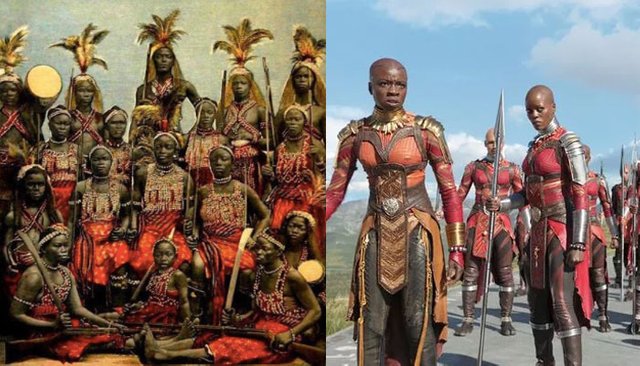
Lip Plates – Ethiopia
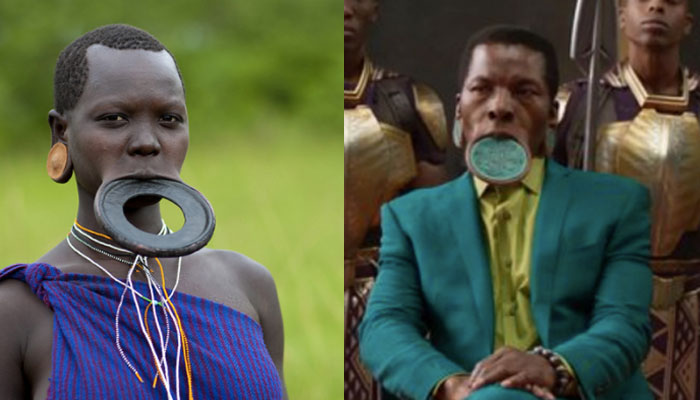
Also known as a lip plug or lip disc, lip plates are a form of body modification where increasingly large discs are inserted into a pierced hole in either the upper or lower lip, thereby stretching it.While other tribes in Africa have used them over time, the Mursi and Surma (Suri) women of Ethiopia still use lip plates till today.
Igbo Mask – Nigeria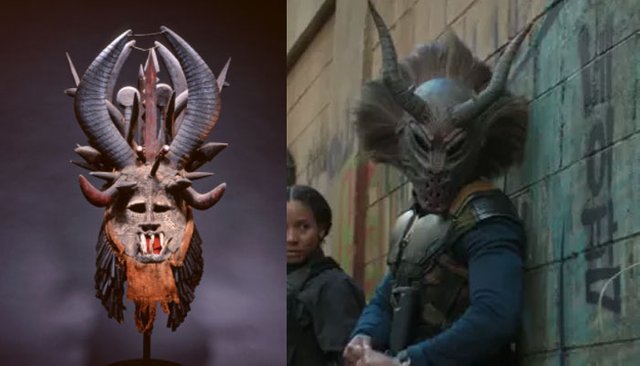
In that same museum scene, Killmonger picked up a mask and wore it. That mask is the Mgbedike, a menacing long-horned mask that originates from Igbo land. Translating to ‘time of the mighty’, the Mgbedike is used during local rituals
Nsibidi – Nigeria
Those Wakandan texts that appear on the screen in multiple scenes, and are inscribed on the walls of the Black Panther’s throne room are actually from Nsibidi, with origins in modern-day Cross River state.
Nsibidi, Black Panther Markings in the Black Panther throne room. Inset – Nsibidi. 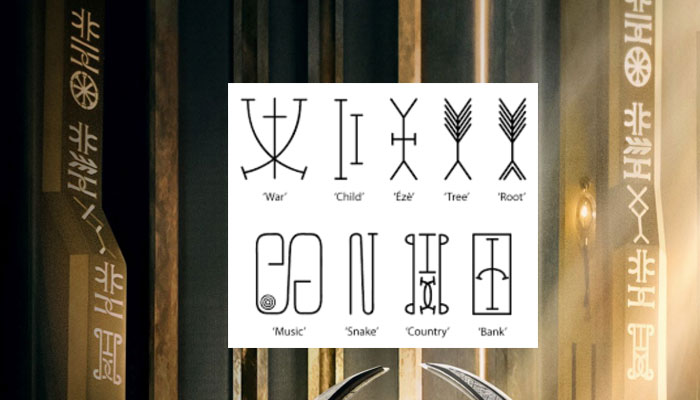 The custodians of the language are the Ekoi – also known as Ejagham – people and they have a population of about 150,000 people. Though almost extinct, because of colonization and English education, the script is still sparingly used till this day.
The custodians of the language are the Ekoi – also known as Ejagham – people and they have a population of about 150,000 people. Though almost extinct, because of colonization and English education, the script is still sparingly used till this day.
Basotho Blanket – Lesotho
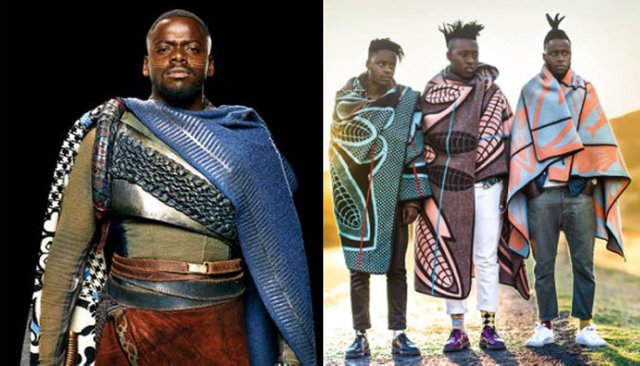
In several scenes, Daniel Kaluuya’s character and many others are shown wearing Basotho blankets around their necks. These blankets are originally from the Lesotho people in Southern Africa.
Killmonger’s tattoos – Ethiopia
The bumpy markings on Michael B. Jordan’s chest and torso are inspired by the scar tattoos on the bodies of the Mursi and Surma people of Ethiopia. While each scar represents each Killmonger kill in the Black Panther movie, the Mursi and Surma people regard the scars as a sign of beauty and strength.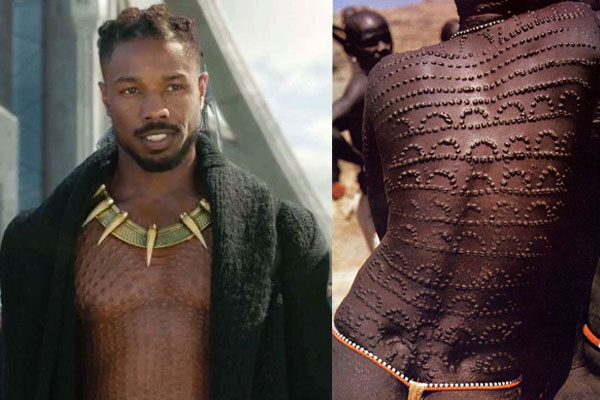
do not copy and paste